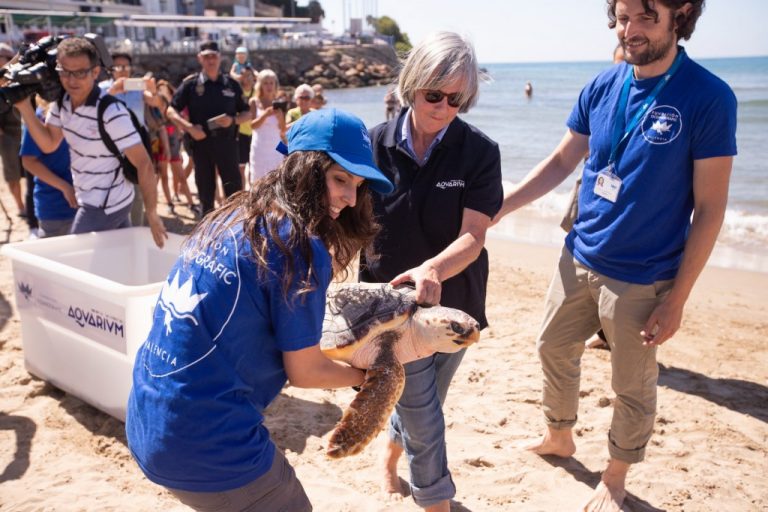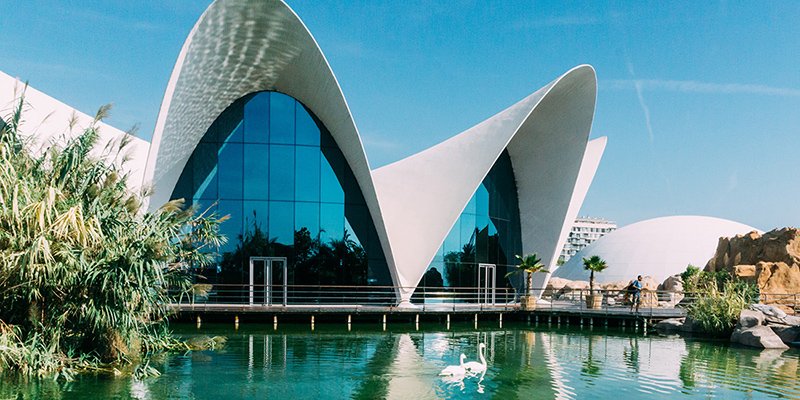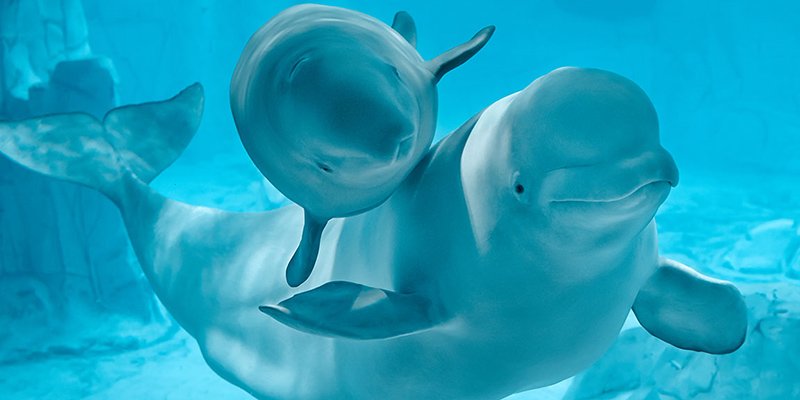Oceanografic
OCEANOGRÀFIC TURTLES

The Oceanogràfic is dedicated to turtles. It may come as a surprise that turtles swim the Mediterranean. These iconic creatures possess the ability to touch our hearts. Occasionally one may need our assistance too.
For a female, creating her nest is a lonely, arduous and complex task. She needs to choose a space far enough above the waterline for her to spawn yet close enough for her offspring to hatch and reach the surf safely.
Sometimes turtles miscalculate. Considering their immense weight, digging a deep nest with their flippers is lengthy and exhausting. If during this time the tide rises higher than calculated, water can fill the nest and so the turtle will abandon her efforts. She will then have to start all over again.
Enter humans. In such a situation a rapid call to 112 will activate the Red de Varamientos, the stranding network. This collaboration between the Ministry of Agriculture, Environment, Climate Change and Rural Development, the Polytechnic University of Valencia and the Oceanogràfic of Valencia is proving highly valuable to turtles in distress.
Support, recovery, incubation and release.
The Oceanogràfic Foundation ascertains the health of the turtle, performs blood tests and ultrasound to verify the female is in perfect health, is carrying mature eggs and developing follicles. If so, they can expect her to search for another location to nest.
A microchip and a satellite signal transmitter are installed to monitor the route she takes during the following days and where the next sunset attempt will take place. Nests can be guarded, moved to a quieter beach or the eggs placed in an incubator located at the Oceanogràfic.
Besides such an occurrence on Port Saplaya beach in June 2018, similar incidents have been recorded on the sands of Sueca in 2016, Torrevieja in 2015 and Alicante in 2014. The goal is to enable the hatching turtles to reach an appropriate size that will increase their survival rate upon release.
Experts from the Oceanogràfic cooperate effectively with other specialists from different conservation centres on both the Atlantic and Mediterranean shores. Turtle have become a subject of conservation due to the massive consequences of human activity.
Donosti, a heart-warming tale of success
Injured through being dragged by a fishing net and weighing just over two kilograms it was recovered late April 2014 by the coastguard service of Bermeo near San Sebastian. The juvenile Caretta caretta turtle was taken to the Wildlife Recovery Centre of Bizkaia, where, in spite of treatment and therapy, it unfortunately had to have its front left wing amputated a month later.
After eight months and already weighing nearly four kilograms, the turtle is transferred to a controlled and dignified environment of the Aquarium of San Sebastian for further recovery. Its exposure supports the topic of environmental education.
The turtle’s reeducation to recover the capacity to swim begins. Because the remaining stump of the its fin is very small, the possibility of implanting a 3d print prosthesis was sadly rejected.
Following a period of adaptation in quarantine, it is then moved to a beautiful tank of Atlantic fauna in the oceanarium along with forty other species including two bull sharks. During the next two years its weight rises to a healthy eleven kilograms.
The aquarium has released many specimens of this species in La Rochelle, where the currents are more favourable for their departure to the Atlantic than on the Basque coast. However, this turtle has a physical disability so three factors influence the location of its release.
The excellent experience of the Oceanogràfic is well documented. Also the natural habitat of this species and the calmer seas of the Mediterranean mean its chance of survival would be higher and opportunities to reproduce more prevalent.
October 2017 sees its arrival in the ocean conservation and recovery area, ARCA, of the Oceanogràfic Foundation to prepare for release into the wild. Some 80,000 children who have experienced the turtle’s journey affectionately baptise it with the name Donosti, similar to the Basque name for San Sebastian.
Eight months later and long after it was found, the turtle is healthy, weighs seventeen kilograms and is ready to go back to the sea. As a nod to the famous Basque beach of the same in San Sebastian, the beach of La Concha de Oropesa del Mar de Castelló is chosen.
A four year odyssey full of professional and loving care has come to an end and Donostiis able to roam free again. Free to discover the beautiful, expansive waters of the Mediterranean sea.
Story Vincent Green, Image Oceanogràfic, Aug 23 2018

OCEANOGRÀFIC VALÈNCIA
The Oceanografic in Valencia excites with surprising insights. Situated in the spectacular surroundings of the City of Arts and Sciences it is the largest aquarium in Europe. Avant-garde architecture creates a magnificent environment for faithfully reproduced marine ecosystems.

OCEANOGRÀFIC INSIGHTS
Each iconic building of the Oceanogràfic in the City of Arts and Sciences presents a unique aquatic environment. There are the Mediterranean, Wetlands, Temperate and Tropical Seas, Oceans, the Antarctic, the Arctic, Islands and the Red Sea as well as the Dolphinarium.
La Utieliana
Plaza Picadero de Dos Aguas 3
46002 Valencia
+34 963 52 94 14
